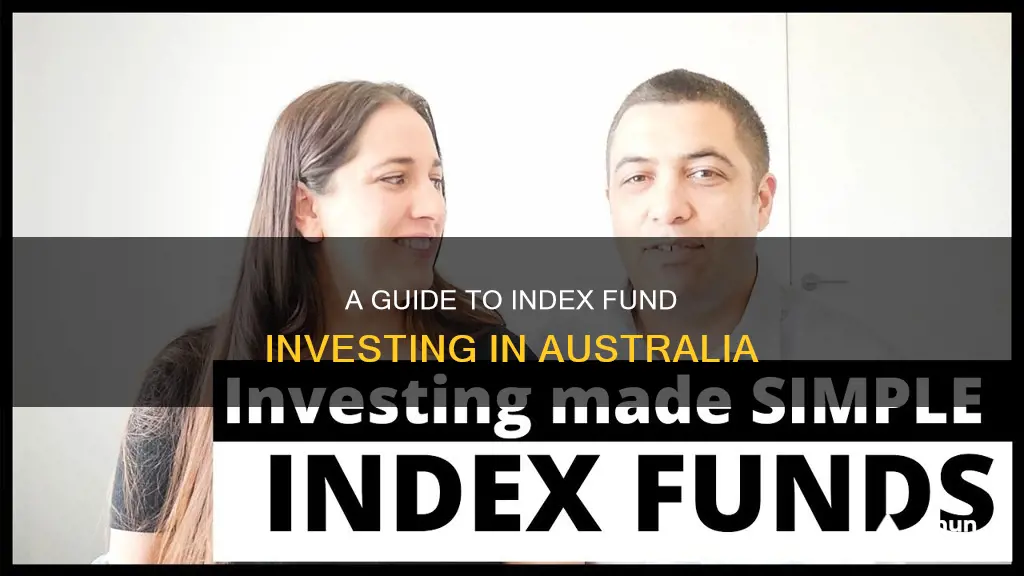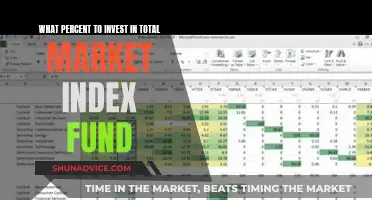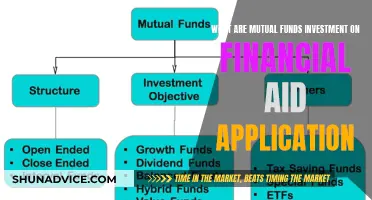
Investing in index funds is a popular way to make money in Australia. An index fund is a type of mutual fund or exchange-traded fund (ETF) that offers a simple, low-cost, and diversified investment option. By tracking the performance of a specific market index, such as the S&P/ASX 200 or the S&P 500, index funds provide investors with broad market exposure. In Australia, investors can choose between passive and actively managed ETFs, with the former being more common. Passive ETFs aim to replicate the performance of an index, while active ETFs employ high-risk trading strategies to outperform the market. When investing in index funds, it is essential to consider factors such as fees, diversification, and the underlying index being tracked.
| Characteristics | Values |
|---|---|
| How to invest in index funds in Australia | Research and choose an index fund, open and fund an investment account, place your order to buy the index fund |
| What is an index fund? | A type of mutual fund or exchange-traded fund (ETF) designed to track the performance of a specific market index |
| Benefits of investing in index funds | Diversification, cost, easy to trade |
| Risks of investing in index funds | Index concentration risk, tracking error, lack of flexibility |
| How to buy and sell units in ETFs | Through a stockbroker or directly with the ETF provider |
| Pros of investing in ETFs | Diversification, transparency, low cost, easy to trade |
| Cons of investing in ETFs | Market or sector risk, currency risk, liquidity risk, tracking errors |
| Best brokers for investing in index funds | Highlow, Etoro, Easymarkets, Vanguard |
What You'll Learn

Choosing a fund
When choosing an index fund, there are several factors to consider. Firstly, it is important to understand the different types of index funds available. In Australia, the two main indices tracked by ETFs are the MSCI Australia index and the S&P/ASX 200 index. The MSCI Australia index tracks large and mid-cap companies, while the S&P/ASX 200 index tracks the 200 largest and most actively traded Australian companies. Additionally, there are international indices that offer exposure to the Pacific region, including the FTSE Developed Asia Pacific ex-Japan index and the MSCI Pacific ex-Japan index.
When selecting an index fund, it is crucial to evaluate the fund's performance, fees, and requirements. Consider the index being tracked, the fund's expense ratio, historical performance, and any minimum investment requirements. For example, the Vanguard Australian Shares Index ETF aims to track the performance of the S/ASX 300 index, while the BetaShares FTSE RAFI Australia 200 ETF tracks the FTSE RAFI Australia 200 index. It is also worth noting that some index funds are passively managed, meaning they simply follow the index they are related to, while others are actively managed, with fund managers employing strategies to outperform the market.
Another factor to consider is the level of diversification offered by the index fund. Index funds provide exposure to multiple companies or assets, reducing the impact of any single stock or sector underperforming. This diversification can also help mitigate risks associated with individual investments. Additionally, some index funds offer exposure to specific sectors or asset classes, such as fixed income, precious metals, or commodities.
It is also important to assess the risks associated with investing in index funds. These include index concentration risk, where certain sectors or industries may be heavily weighted, leading to potential underperformance. Tracking error is another risk, where the ETF's price may differ from the market index it aims to match. Lastly, index funds may lack flexibility, as they passively track a specific index and do not allow for active management to capitalise on market opportunities.
When choosing an index fund, it is advisable to compare different options and consider your investment goals, risk tolerance, and the level of diversification and exposure desired. Evaluating the reputation and location of the fund provider can also help ensure the platform is trustworthy and compliant with relevant laws.
Pension Funds: Where Are Government Investments Directed?
You may want to see also

Opening an investment account
To open an investment account, you will need to choose a broker or financial institution. This could be a brokerage firm or your bank, for example.
When choosing a broker, consider the fees involved, such as trade fees, account fees, and transfer fees. Some brokers may charge upwards of $100 for each ACATS transfer, so it's important to review the costs before signing up. It's also worth looking at what other investment options they offer if you want to invest in more than just index funds.
Once you've chosen a broker, the next step is to open and fund your account. This usually involves depositing funds into the account, which you can then use to purchase the index fund of your choice.
In Australia, you can open an investment account with a range of different brokers, including CommSec, Highlow, Etoro, and Easymarkets. Some brokers, like CommSec, offer trading for all ETFs listed on the ASX, while others, like Highlow, offer specific index funds like AUS200 and SP500.
It's important to do your research and compare different brokers before opening an account to ensure you're getting a good deal and the investment options you want.
Mutual Fund Roth IRA: Best Investment Options
You may want to see also

Buying shares
You can buy shares in index funds through a stockbroker or brokerage firm, the same way you buy shares in a company. You can also buy them through your superannuation fund.
Firstly, you'll need to research and choose an index fund. There are many to choose from, including those that track large companies, small companies, foreign companies, commodities like gold and silver, and more.
Once you've chosen an index fund, you'll need to open and fund an investment account with a brokerage firm or financial institution. You can then place your order to buy shares in the chosen index fund.
Some brokers offer fractional share trading, which lets you invest specific dollar amounts instead of needing the current market price. For example, if an index fund trades at $500, some brokers will let you invest with as little as $1.
When buying shares in an index fund, it's important to consider the risks involved, such as index concentration risk and tracking error.
In Australia, you can buy shares in index funds that track the Australian stock market, such as the S&P/ASX 200, or international indices like the S&P 500 or the Dow Jones Industrial Average.
Some popular brokers in Australia for buying shares in index funds include Highlow, Etoro, Easymarkets, and Vanguard.
Before investing, be sure to do your research and understand the potential risks and downsides, as with any investment.
Bank Loan Funds: A Smart Investment Choice
You may want to see also

Pros and cons
Pros
- Diversification: Index funds allow you to invest in a range of stocks or asset classes with a single purchase, helping to diversify your portfolio.
- Cost: Index funds are passively managed, requiring less research and expertise than actively managed funds, and therefore have lower fees.
- Easy to trade: Index funds can be bought and sold easily, in the same way as shares.
- Long-term growth potential: Over the long term, index funds have historically delivered better returns than professional fund managers.
- Easy for beginners: Index funds are a good option for beginners as they are low-cost, easy to buy, and can help to diversify a portfolio.
Cons
- Average annual returns: Due to their diversified nature, index funds deliver only average annual returns, diluting the possibility of big gains.
- Limited scope for short-term gains: As passive investing vehicles, index funds do not offer much scope for capturing big short-term gains.
- Lack of control: While you can research the assets likely to be included in an index fund, you cannot choose the exact companies that will be included.
- Liquidity: The open-ended nature of index funds means that there may be challenges in recouping funds quickly during a market panic.
- Tracking errors: An index fund's return may differ from the index it is designed to track due to differences in assets, fees, taxes, and other factors.
Maximizing EIDL Funds: Strategies for Savvy Business Investments
You may want to see also

Tax implications
When investing in index funds in Australia, it is important to be aware of the tax implications. Here is some information on the tax implications of investing in index funds in Australia:
Taxation of Investment Income
Any income earned from investments, including managed fund distributions and capital gains from property, shares, and cryptocurrencies, must be included in your tax return. The tax on this income is calculated at your marginal tax rate. It is important to note that you are allowed to claim tax deductions for the costs incurred in buying, managing, and selling your investments, but there are specific rules around what can and cannot be claimed.
Capital Gains and Losses
If you sell an investment for a higher price than you paid for it, you have made a capital gain, which must be included in your tax return for that year. Capital gains are taxed at your marginal tax rate. However, if you have held the investment for more than 12 months, you are eligible for a 50% capital gains tax (CGT) discount, meaning you only pay tax on half of the gain.
On the other hand, if you sell an investment for less than you paid for it, you incur a capital loss. You can use this capital loss to reduce your capital gains in the same year or carry it forward to offset future capital gains. It is important to note that capital losses can only be offset against capital gains and not other types of income.
Positive and Negative Gearing
Positive gearing occurs when the income generated from your investment (such as rent or dividends) exceeds the cost of the investment (interest and other expenses). In this case, you will need to pay tax on the additional income. Negative gearing, on the other hand, is when the investment income is less than the cost of the investment, and you may be able to claim a tax deduction for the loss.
Tax-Effective Investments
When choosing investments, it is recommended to consider your financial goals, risk tolerance, and expected returns first, rather than focusing solely on tax benefits. However, some investments, such as superannuation and insurance bonds, can offer tax advantages. For example, superannuation contributions and investment earnings are taxed at a maximum rate of 15%withdrawals after age 60 are typically tax-free. Insurance bonds held for at least 10 years are taxed at the corporate tax rate of 30%advantageous for investors with a marginal tax rate higher than this.
Record-Keeping
To ensure compliance with your tax obligations, it is essential to maintain good records of your investments. Keep track of dates, prices, commissions, and details of taxable events such as share splits, consolidations, mergers, and demergers. This will help you accurately calculate and report your investment income and capital gains or losses in your tax return.
Bernie Madoff's Ponzi Scheme: Avoiding Client Fund Investments
You may want to see also
Frequently asked questions
An index fund is a type of mutual fund or exchange-traded fund (ETF) that is designed to track the performance of a specific market index, such as the S&P 500 or the Dow Jones Industrial Average. Index funds are passively managed, meaning they replicate the composition of an index by holding a diversified portfolio of securities that mirror the index's weighting.
Index funds offer broad market exposure at a low cost and with minimal turnover. They are low-cost, easy to buy, and can provide diversification for an investment portfolio.
Some risks associated with index funds include index concentration risk, tracking error, and lack of flexibility. Index concentration risk occurs when an index is heavily weighted towards specific sectors or industries, which can negatively impact performance if those sectors or industries underperform. Tracking errors can cause the ETF price to differ from the market index it is supposed to match. Lastly, index funds may lack flexibility as they passively track a specific index and do not allow for active management or stock selection.
When choosing an index fund, consider factors such as the index being tracked, the fund's expense ratio, historical performance, and any minimum investment requirements. Research different index funds available in the market, such as the S&P 500, Russell 2000, or Nasdaq Composite.
To invest in an index fund, you will need to open and fund an investment account with a brokerage firm or financial institution. You can then place an order to buy shares of the chosen index fund through your broker. Remember to consider the associated fees and costs involved in buying and selling ETFs.







